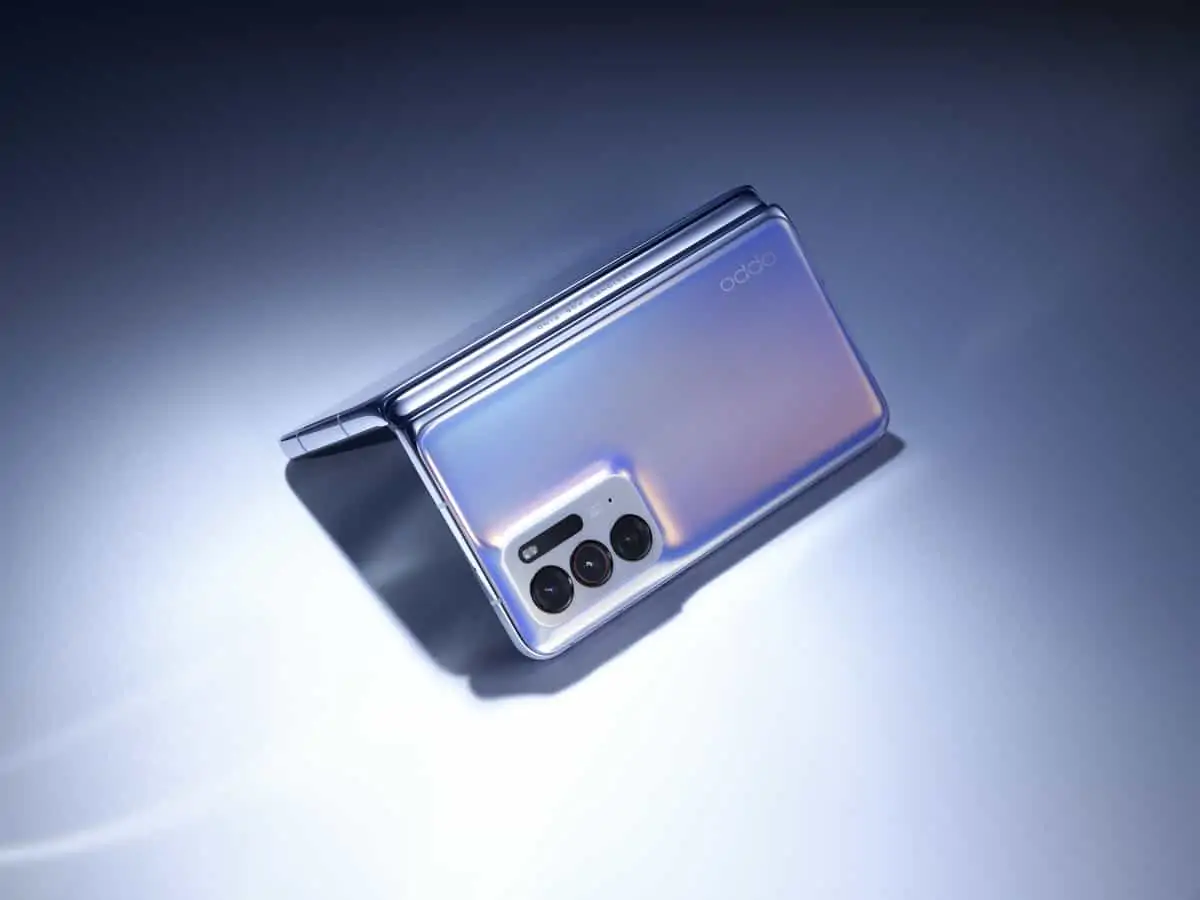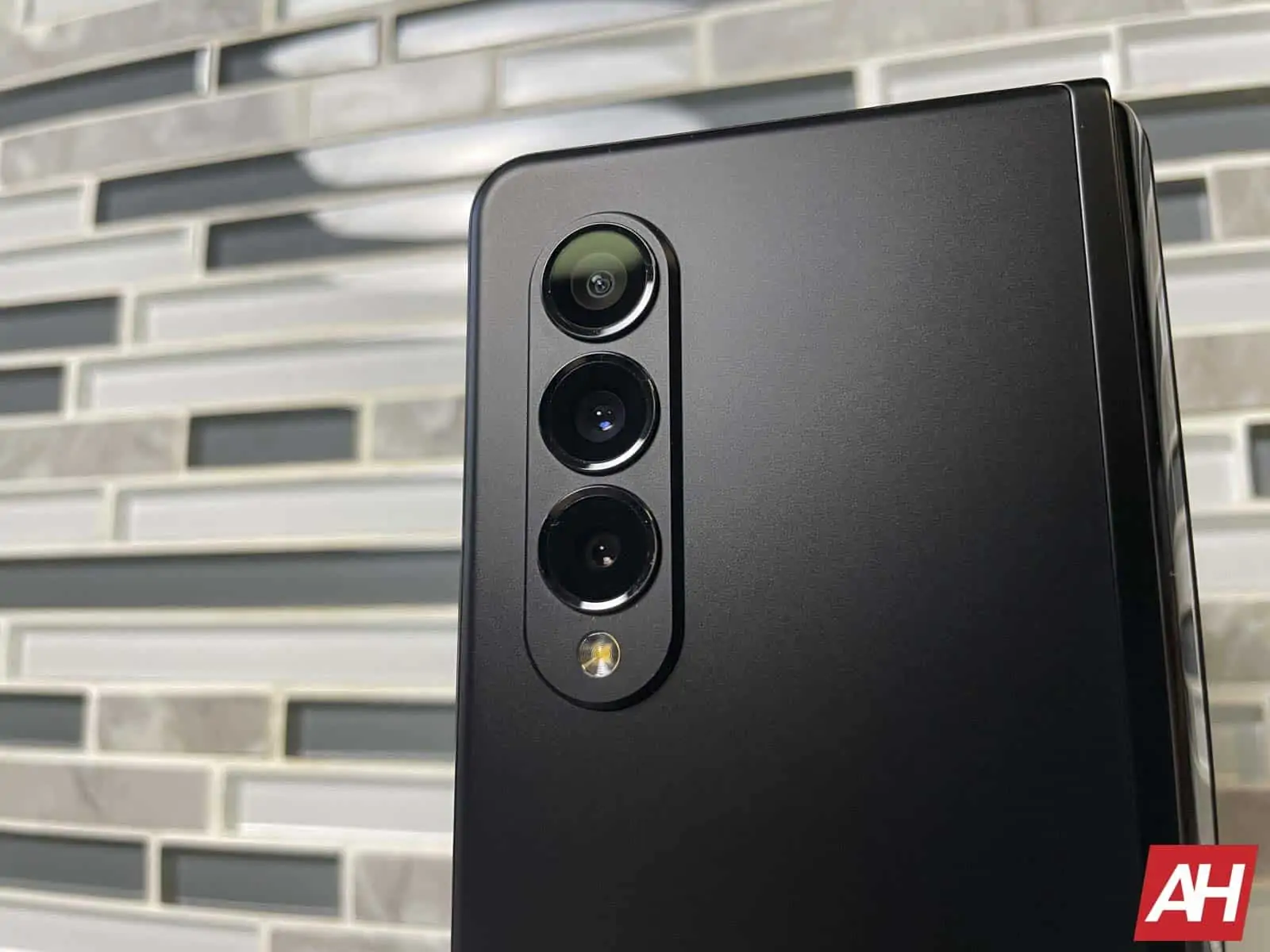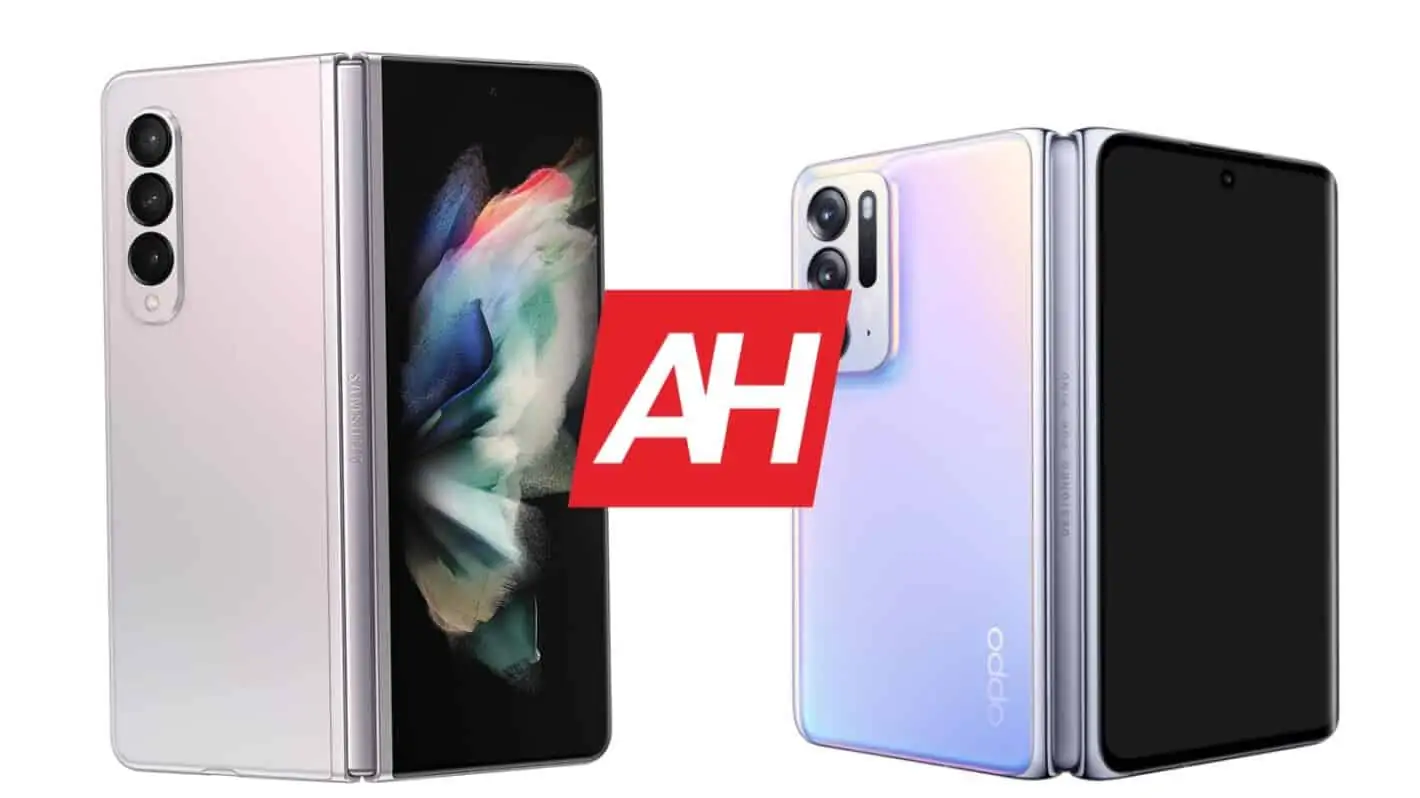OPPO recently launched its first foldable smartphone that is quite compelling, despite the fact it’s the very first foldable from the company. That being said, in this article, we’ll compare it to the best foldable Samsung has to offer. In other words, we’ll compare the Samsung Galaxy Z Fold 3 vs OPPO Find N. These two phones both fold like you’d fold a book, but they are considerably different.
The two phones differ drastically when it comes to size, and in a number of different ways. OPPO did some things differently, and it made some good calls along the way. Can it compete with the best Samsung has to offer, though? Well, that’s what we’re here to find out, in a way. We’ll kick things off by listing their specifications, and will then move to various other categories. This will hopefully help you figure out which foldable suits you more.
Specs
| Samsung Galaxy Z Fold 3 | OPPO Find N | |
| Screen size | Main: 7.6-inch fullHD+ Dynamic AMOLED 2X Flex display (foldable, 120Hz) Secondary (Cover): 6.2-inch HD+ Super AMOLED display (flat, 120Hz) |
Main: 7.1-inch fullHD+ LTPO AMOLED display (foldable, 120Hz) Secondary (Cover): 5.49-inch AMOLED display (curved on the right side, 60Hz) |
| Screen resolution | Main: 2208 x 1768 Secondary (Cover): 2268 x 832 |
Main: 1920 x 1792 Secondary (Cover): 1972 x 988 |
| SoC | Qualcomm Snapdragon 888 | Qualcomm Snapdragon 888 |
| RAM | 12GB (LPDDR5) | 8GB/12GB (LPDDR5) |
| Storage | 256GB/512GB (UFS 3.1); non-expandable | 256GB/512GB (UFS 3.1); non-expandable |
| Rear cameras | 12MP (1.8um pixel size, Super Speed Dual Pixel OIS, f/1.8 aperture, 83-degree FoV) 12MP (1.0um pixel size, f/2.4 aperture, 45-degree view, 2x optical zoom, 10x digital zoom, telephoto) 12MP (1.12um pixel size, f/2.2 aperture, 123-degree FoV, ultra-wide) |
50MP (f/1.8 aperture, OIS, 1.0um pixel size, omnidirectional PDAF, wide-angle, 24mm lens) 16MP (ultrawide, f/2.2 aperture, 123-degree FoV, 1.0um pixel size, 14mm lens) 13MP (telephoto, f/2.4 aperture, 52mm lens, PDAF, 2x optical zoom, 1.0um pixel size) |
| Front cameras | Main: 4MP (f/1.8 aperture, 2.0um pixel size, 80-degree FoV) Secondary: 10MP (f/2.2 aperture, 1.22um pixel size, 80-degree FoV) |
Main: 32MP (f/2.4 aperture, 0.8um pixel size, 26mm lens) Secondary: 32MP (f/2.4 aperture, 0.8um pixel size, 26mm lens) |
| Battery | 4,400mAh, non-removable, 25W fast wired charging, 11W wireless charging, 4.5W Wireless PowerShare | 4,5o0mAh, non-removable, 33W wired charging, 15W wireless charging, 10W reverse wireless charging |
| Dimensions | Unfolded: 158.2 x 128.1 x 6.4mm Folded: 158.2 x 67.1 x 16.0mm |
Unfolded: 132.6 x 140.2 x 8mm Folded: 132.6 x 73 x 15.9mm |
| Weight | 271 grams | 275 grams |
| Connectivity | 5G, LTE, NFC, Bluetooth 5.0, Wi-Fi, USB Type-C | 5G, LTE, NFC, Bluetooth 5.2, Wi-Fi, USB Type-C |
| Security | Side-facing fingerprint scanner | Side-facing fingerprint scanner |
| OS | Android 11 One UI 2.5 |
Android 11 ColorOS 12 |
| Price | $1,799 | $1,209 (approximately) |
| Buy | Samsung | OPPO (not yet available) |
Samsung Galaxy Z Fold 3 vs OPPO Find N: Design
Both of these phones are made out of metal and glass, but they’re quite different. The Galaxy Z Fold 3 is a noticeably larger phone. It is a bit more narrow when folded, but it’s a lot taller. The OPPO Find N is far more compact in the hand when folded, and can be used with one hand. When unfolded the Galaxy Z Fold 3 is almost a square, while the OPPO Find N will give you more of that landscape ratio. More on that in the display section, though.
Both phones include three cameras on the back, and their camera setups are even in the same spot. The hinges used here are quite interesting. The Galaxy Z Fold 3’s allows for water and dust resistance (IPX8), while the OPPO Find N’s does not, but many would argue it’s more advanced. OPPO’s hinge actually folds the display in a way to avoid creating a major crease. More on that in the display section.

Both of these phones include Gorilla Glass Victus on the back, and their secondary displays are protected by it as well. They actually weigh almost the same, the Galaxy Z Fold 3 is at 271 grams, while the OPPO Find N weighs 275 grams. Hinges on both devices are hidden when they’re unfolded. Both devices feel good in the hand, but they are slippery, and they’re also quite heavy, so keep that in mind.
Samsung Galaxy Z Fold 3 vs OPPO Find N: Display
Both the Galaxy Z Fold 3 and OPPO Find N have two displays. The Galaxy Z Fold 3 features a 7.6-inch 2208 x 1768 main display with a 120Hz refresh rate. This panel supports HDR10+ content, and gets quite bright at 1,200 nits of peak brightness. The cover display on the phone measures 6.2 inches, and it’s a 2268 x 832 display, which is protected by the Gorilla Glass Victus. This is a 120Hz panel as well.
The OPPO Find N, on the other hand, has a 7.1-inch main display with 1792 x 1920 resolution. This is also an LTPO AMOLED display with a 120Hz refresh rate, and it supports HDR10+ content. This display also gets quite bright at 1,000 nits of peak brightness. The cover display on the phone measures 5.49 inches, and it offers a resolution of 1972 x 988. This panel is protected by the Gorilla Glass Victus, and it’s curved on the right side only. This is a 60Hz display.
The OPPO Find N’s main display has a noticeably less pronounced crease than the Galaxy Z Fold 3. OPPO’s new hinge is doing its job quite well, and OPPO says that crease is around 80-percent visible than the ones on the competition. Its display is also already in kind of landscape mode when unfolded, unlike the Galaxy Z Fold 3’s, so it’s better for multimedia consumption.
All displays are quite vivid, and are very responsive to the touch. The viewing angles are great, and they’re a joy to use, basically. The blacks are also deep as they should be on OLED displays, and high refresh rates help things. The secondary display on the Find N does not have a high refresh rate, though, and some of you will notice that while scrolling, and so on, but it won’t be a major problem for the vast majority of people.
Samsung Galaxy Z Fold 3 vs OPPO Find N: Performance
Spoiler alert, the performance is excellent on both phones. That is not surprising at all considering that both of them use mature OS’, and offer top-of-the-line specifications. The Snapdragon 888 fuels both of these smartphones, while you’ll find plenty of RAM inside both of them. Both companies decided to utilize LPDDR5 RAM and UFS 3.1 flash storage, which is a good thing, of course.
Both One UI and ColorOS are quite mature skins at this point, and they run great on top of Android. They are considerably different, but both include plenty of features that you can enjoy. The Galaxy Z Fold 3 offers more in that regard, arguably, as it also supports the S Pen stylus. Apps run smoothly on both phones, and that goes for opening and closing as well. Multitasking is also really fluid on both, as it should be, considering these two phones are supposed to be multitasking machines.
You can, of course, run two apps side by side on both, while both of them offer more options for multitasking as well. The Galaxy Z Fold 3 does offer a bit more in that regard, as already mentioned, but the OPPO Find N’s aspect ratio is kind of better for the purpose of multitasking.
Samsung Galaxy Z Fold 3 vs OPPO Find N: Battery
The Samsung Galaxy Z Fold 3 features a 4,400mAh battery, while the OPPO Find N has a 4,500mAh unit. So the OPPO Find N has a slightly larger battery, while having smaller displays, and a lower refresh rate outer display. Does that result in better battery life? Well, based on initial reports, it could, but it’s difficult to say. Why? Well, because there are a lot of factors that go into it, especially on foldable smartphones.
Each of us use our phones differently. Those of you who game a lot, or do other types of processor-intensive tasks will kill the battery a lot sooner. Your cell reception matters a lot, the types of apps you’re using, and so on. When it comes to foldables, there are also two displays to think of. The OPPO Find N’s outer display will consume noticeably less battery than its main one, the same goes for the Galaxy Z Fold 3.
Let’s just say this, the battery life on both phones is quite good. Chances are that most of you will be able to get a full day out of both phones, but if you really push them hard, it’s always possible you’ll have to top-up during the day. Both devices do offer fast charging, though the Find N offers more in that regard. It supports 33W wired, 15W wireless, and 10W reverse wireless charging. The Galaxy Z Fold 3 supports 25W wired, 11W wireless, and 5W reverse wireless charging. What’s worth noting is that the Z Fold 3 doesn’t even include a charger in the box.
Samsung Galaxy Z Fold 3 vs OPPO Find N: Cameras
Each of these two phones has five cameras, though the setups are fairly different. The Galaxy Z Fold 3 has three 12-megapixel cameras on the back, while 4 and 10-megapixel selfie cameras are also included. That 4-megapixel camera is an under-display one (main display), though it’s still fairly visible. The OPPO Find N includes 50, 13, and 16-megapixel cameras on the back, while two 32-megapixel selfie cameras are also included, one on each display.

Having said that, both phones use wide angle, ultrawide angle, and telephoto cameras on the back. Those cameras are quite capable on both phones, though the results are different. Images from the Galaxy Z Fold 3 are a bit warmer, and seem a bit more processed, while the OPPO Find N does find a good balance. The pictures on the OPPO Find N are still not as great as the ones on the OPPO Find X3 Pro, despite the same main camera, so further optimizations will be issued via updates, we reckon. The Find X3 Pro has great camera performance, so you have every right to expect the same from the Find N. It’s really good now, but it can improve still.
Low light photos are really great from both devices as well, as are ultrawide ones. Do note that neither of these two phones is the best in the market when it comes to photography, but they’re up there. You’ll get really good cameras no matter which ones you opt for.
Audio
What about the audio? Well, you’ll get stereo speakers on both phones, though the ones on the Z Fold 3 do sound a bit richer. The difference is not that big, though, and you’ll be happy with either pair, to be quite honest. Both sets of speakers are well-balanced, and provide clear vocals, with a wide soundstage.
What you won’t get on either phone is a 3.5mm headphone jack. You’ll have to rely on a Type-C port, or connect your headphones via Bluetooth. If you connect a good pair of headphones, regardless of which method you use, you’ll be provided with really good sound in return. Not many people will have audio-related complaints, that’s for sure.

